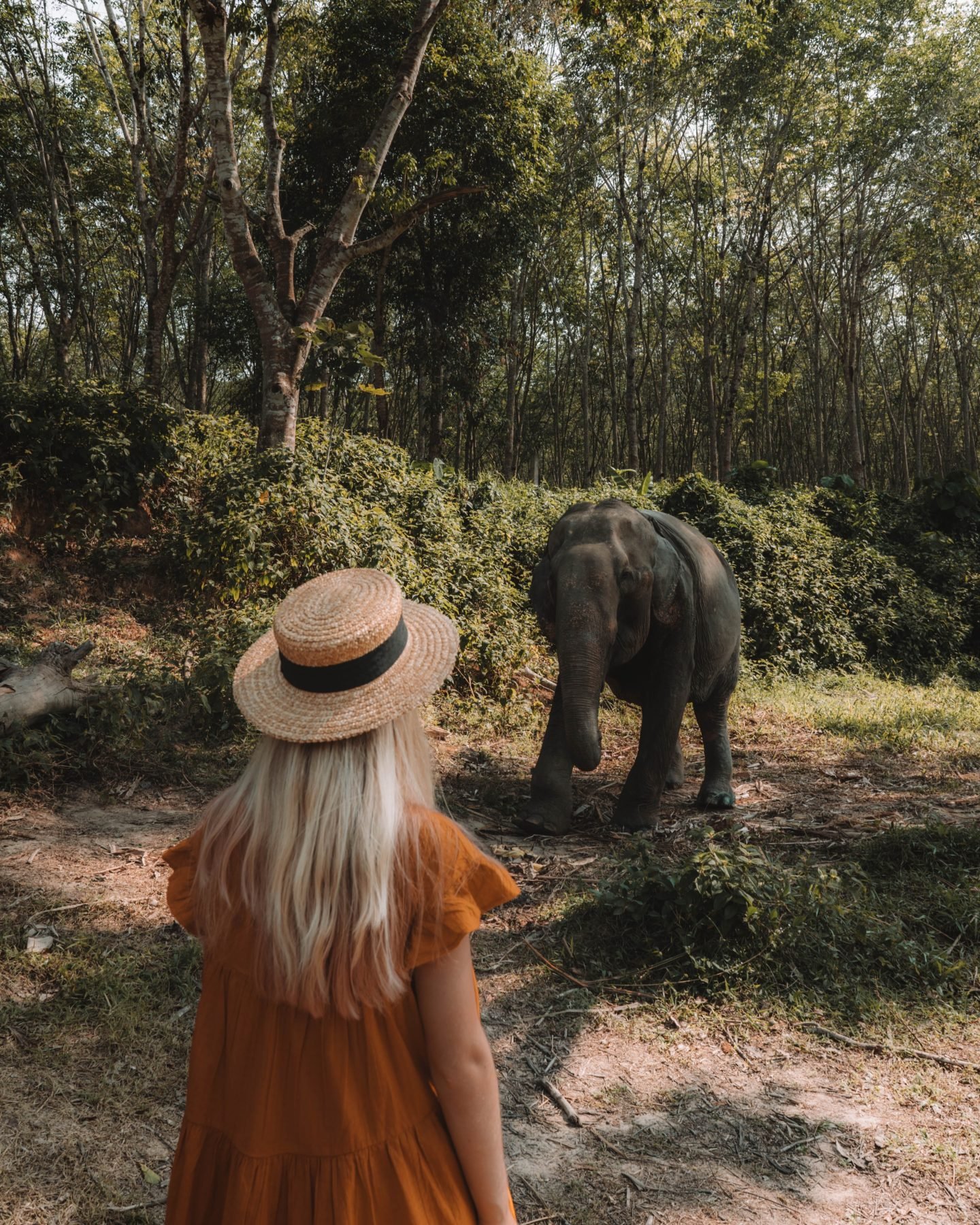Hey, travel FAM! Maybe riding an elephant in Thailand or a camel in the desert is in the bucket list of many people. But, unfortunately, a sad reality is hidden behind these industries. If you are wondering why we should never ride animals during our travels? The answer is that elephants, camels, horses, donkeys, or even dolphins are unfortunately suffering from animal cruelty. People behind the Instagram photos proudly riding animals are generally not aware of the animal cruelty behind their photos.
Why we should never ride animals?
You need to know that animals that are ridden and that accept to have someone on their backs have been mistreated for that. A wild animal will never accept to be ridden by anyone. Have you ever tried to ride a wild horse or a wild camel? This is impossible! This is not a normal situation for them. Generally, they have been captured, taken really young from their mother and beaten to be domesticated.
Elephants in Asia
Elephants are beaten into submission
More than 3,000 elephants, including babies, are held captive in elephant tourist-attraction “orphanages” and “parks” across Asia. And the number is growing, according to new findings from our friends at World Animal Protection. The animals are beaten into submission when young and then forced to let travelers take rides on their backs. But also to perform confusing and sometimes painful tricks. Including walking on tightropes, balancing on two legs on a small drum, painting pictures, and dancing. But if tourists knew what elephants endured for their vacation photos, they would hit “delete”, on both the pictures and the industry.
They are taken from their mothers in the wild
When they’re babies, elephants are taken from their mothers and families in the wild. Because they have a high sale value, not only are babies illegally captured. Their protective mothers are also often killed as they try to save them.
“Training” begins immediately. The babies are tied down and beaten with bullhooks and other instruments designed to inflict pain until their spirits are broken. And they’re willing to obey their “trainers” to avoid pain. Researchers have found that elephants who are subjected to this “breaking” or “crush” process often develop post-traumatic stress disorder.
Also, Elephants in nature live in matriarchal herds in which they forage for fresh vegetation, play, bathe in rivers, and travel many miles a day. Held in captivity, they can move only in small circles in an arena or along a short path. While carrying humans on their backs, even on the hottest days.
They are kept in sheds and working until death
When they aren’t working, the animals are usually kept in sheds or shacks. Often with concrete floors that damage their legs. And they’re bound by chains that can be so tight they can barely move. Captive elephants are routinely denied nutritious food, adequate water, and needed veterinary care, especially for their feet. The lack of exercise and long hours spent standing on hard surfaces are major contributors to serious foot problems, arthritis, and back injuries. Most captive elephants die decades short of their normal lifespan.
According to World Animal Protection, “Between 2010 and 2016 in Thailand alone, 17 fatalities and 21 serious injuries to people by captive elephants were reported in the media. Unreported incidences involving local elephant keepers are likely to make this figure much higher.”
Because public awareness of cruelty to captive elephants has increased, many attractions are trying to dupe tourists. By adding words such as “sanctuary,” “rescue center,” “refuge,” and “retirement facility” to their names. But the abusive training methods and deprivation are often the same. And make the elephants follow the trainers’ commands to let people ride, feed, touch, or bathe them. Be careful when visiting an elephant sanctuary, make your own research before!
Camels and donkeys in the Middle East
This horrific footage shows beaten and bloodied animals being used to carry tourists around the great sites of Egypt. But it is the same thing in Morocco Turkey, UAE or Jordan. Upsetting scenes show starving horses and camels collapsing as they are forced to haul people around in the blistering heat. Tourists have now been urged not to ride animals and unwittingly fuel the trade in animal abuse. A spokesperson for People for the Ethical Treatment of Animals (PETA), which filmed the traumatic scenes, said: “Animals who carry tourists around are abused right in the open”. ‘Horses at the Great Pyramid of Giza are beaten and whipped just so that tourists can ride them. ‘They are forced to carry tourists in the choking dust and sweltering heat even if they are exhausted and emaciated.’
Even hurts, animals are still beaten to be ridden by tourists
Shocking pictures show camels and horses being whipped with sticks if they struggle to carry the tourists. Even with open and bleeding wounds, they are then put back to work in the glaring sun. Of course, without being offered water. Video footage shows handlers in Giza violently beating a poor horse who had collapsed on his side. While being forced to pull a carriage. Despite being severely injured in the fall, the animal was continually attacked until it got back up. Many horses used for rides in Giza and Luxor had painful, bloody wounds. And they were forced to wait in the scorching sun for the next customer without food, water, or access to shade. Emaciated horses whose ribs showed through their skin were repeatedly yanked and whipped.
PETA went to Birqash camel market and filmed men and children viciously beating screaming camels with sticks. Many of the animals’ faces were bloody, and one camel foamed at the mouth. Once the animals are no longer useful to the tourist trade, they are sold off to be slaughtered.
How to fight against this animal cruelty
PETA called on tourists not to ride animals and alert friends. But also alert friends and family who are going to the Middle East about their suffering. The group said: ‘If you ride animals, you are fuelling this extreme abuse. ‘Please travel responsibly. Do not ride animals and if you know people traveling to the Middle East show them this film.’ The charity has called on the Egyptian Ministry of Tourism to replace these abused animals with modern conveyances such as electric rickshaws. That way, tourists can appreciate the country’s rich history without supporting cruelty. I am sorry the video is hard to watch, I cried myself. But it is important to watch to be aware of reality and share the message around you and help to stop this.
Dolphins
Swim-with-the-dolphins (SWTD) attractions,some of which allow participants to “ride” a dolphin by holding onto the animal’s dorsal fin. This has been decried by NAW groups as unsafe and inhumane for the highly intelligent marine mammals. For animals that swim over 40 miles a day in the wild and engage in complex social interaction with other dolphins, captive life in the entertainment industry is miserable. Seaworld in the USA is a good example.
Captive dolphins are forced to swim in endless circles in artificial habitats, interact with unfamiliar dolphins and other species and perform behaviors that are unnatural and in some cases painful, writes World Animal Protection. Captive dolphins can often be seen exhibiting clear signs of psychological stress, like swimming in circles or floating unmoving near the water’s surface, the organization notes.
Most SWTD programs use dolphins captured from the wild, a process so traumatic that it can result in dolphins dying from stress, according to Humane Society International.
That’s not to say life is better for captive-bred dolphins. A former trainer from the Bahamas, speaking with The Dodo, said he witnessed mothers in captivity intentionally drowning their newborn offspring. He said his colleagues suspected the mother dolphins did this to prevent their young from living a life in captivity.
Manatees
While it’s illegal to disturb or harass a manatee under the Florida Manatee Sanctuary Act, people occasionally attempt hitch a ride on the gentle sea cows anyway.
If you are getting caught doing so can land you a $500 fine or up to 60 days in jail, but those aren’t the only reasons you should refrain from hopping aboard a manatee. Humans attempting to interact with manatees can alter the creatures’ behavior for the worse, says the Florida Save the Manatee Club.
The animals might end up changing their regular routes to avoid humans. Potentially traveling to dangerous areas where they can be hurt or injured by boats, the group says. Additionally, by swimming after a manatee, you could be unintentionally chasing a mother away from her baby, or vice versa.
If you love animals, don’t ride them!
Thank you for reading! And I also want to thank you for raising your awareness against animal cruelty, I am sure you will not like photos on social media of people riding animals! Please share the message around you, friends, family, at work! We need you! And it urges us to act and help animals! You can also read our post about how to act to save the oceans?



Coucou Chiara, tout d’abord, merci d’avoir écrit cet article très informatif. L’homme est capable du pire. C’est sûr qu’il fait bien se renseigner avant de voyager.